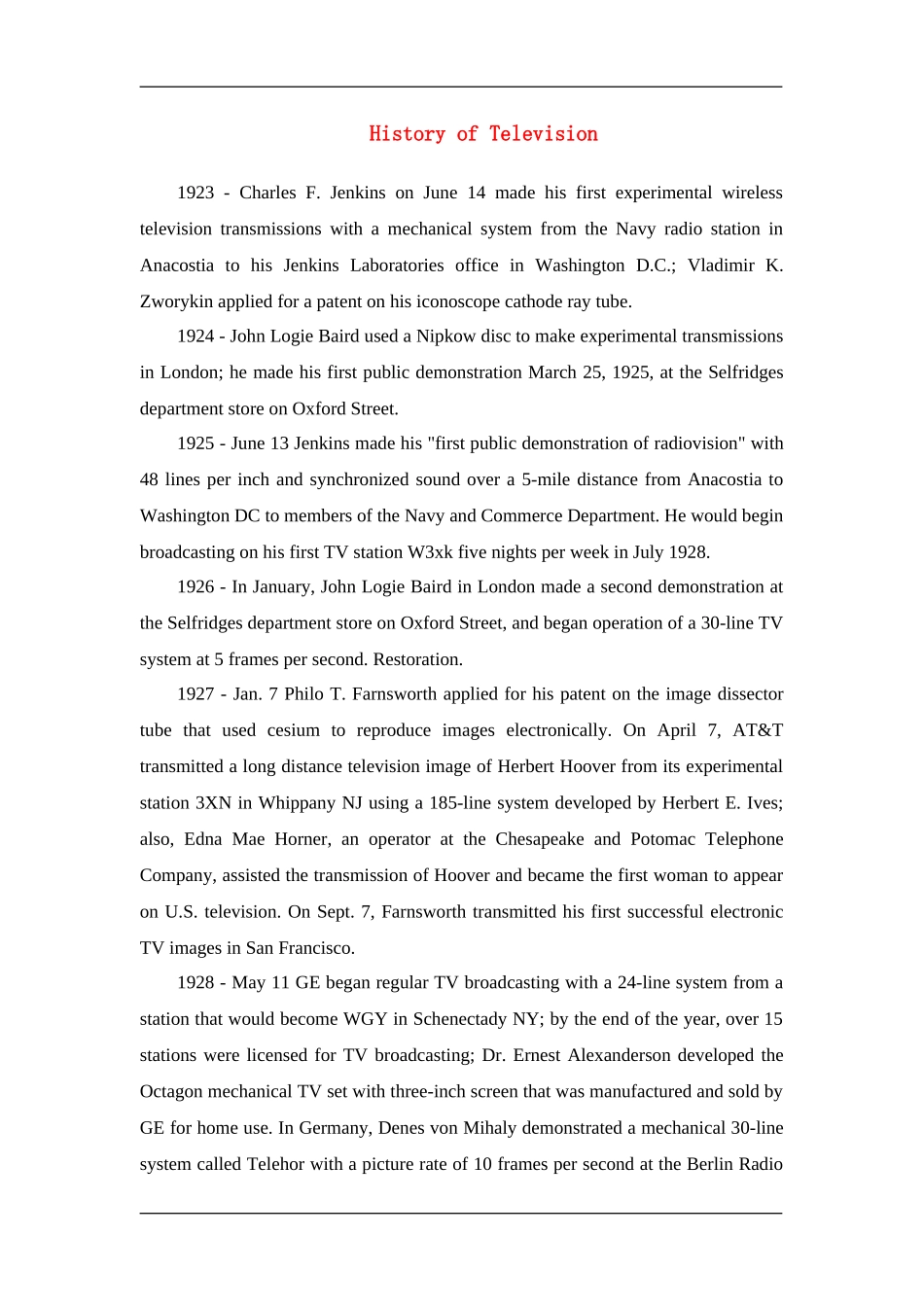History of Television1923 - Charles F. Jenkins on June 14 made his first experimental wireless television transmissions with a mechanical system from the Navy radio station in Anacostia to his Jenkins Laboratories office in Washington D.C.; Vladimir K. Zworykin applied for a patent on his iconoscope cathode ray tube. 1924 - John Logie Baird used a Nipkow disc to make experimental transmissions in London; he made his first public demonstration March 25, 1925, at the Selfridges department store on Oxford Street. 1925 - June 13 Jenkins made his "first public demonstration of radiovision" with 48 lines per inch and synchronized sound over a 5-mile distance from Anacostia to Washington DC to members of the Navy and Commerce Department. He would begin broadcasting on his first TV station W3xk five nights per week in July 1928. 1926 - In January, John Logie Baird in London made a second demonstration at the Selfridges department store on Oxford Street, and began operation of a 30-line TV system at 5 frames per second. Restoration. 1927 - Jan. 7 Philo T. Farnsworth applied for his patent on the image dissector tube that used cesium to reproduce images electronically. On April 7, AT&T transmitted a long distance television image of Herbert Hoover from its experimental station 3XN in Whippany NJ using a 185-line system developed by Herbert E. Ives; also, Edna Mae Horner, an operator at the Chesapeake and Potomac Telephone Company, assisted the transmission of Hoover and became the first woman to appear on U.S. television. On Sept. 7, Farnsworth transmitted his first successful electronic TV images in San Francisco. 1928 - May 11 GE began regular TV broadcasting with a 24-line system from a station that would become WGY in Schenectady NY; by the end of the year, over 15 stations were licensed for TV broadcasting; Dr. Ernest Alexanderson developed the Octagon mechanical TV set with three-inch screen that was manufactured and sold by GE for home use. In Germany, Denes von Mihaly demonstrated a mechanical 30-line system called Telehor with a picture rate of 10 frames per second at the Berlin Radio Show. 1929 - June 27 Herbert E. Ives demonstrated a mechanical color TV system of 50-lines from AT&T in NY to Washington DC; Zworykin demonstrated Nov. 18 his 120-line system of electronic television with its Kinescope tube at 24 frames per second. 1930 - July 30 NBC started its first TV station in NY called W2XBS 1931 - Manfred von Ardenne showed his "flying spot" cathode-ray tube at the Berlin Radio Show, inaugurating the development of electronic television in Germany that debuted at the Berlin Olympics in 1936.

